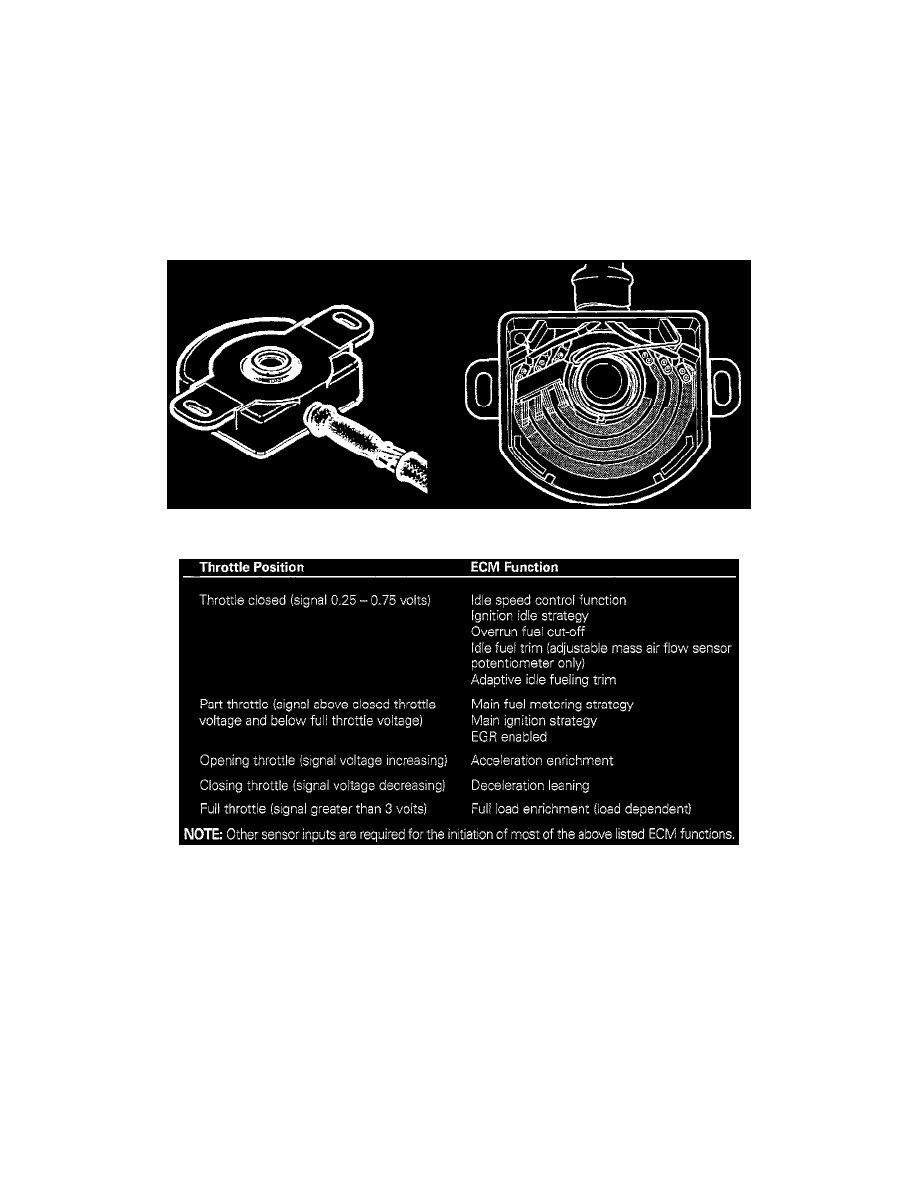Vanden Plas L6-4.0L (1990)

Throttle Position Sensor: Description and Operation
The throttle position sensor is a twin track design containing two separate potentiometer tracks with wipers driven by a common spindle. The
sensor is mounted on the throttle housing with the spindle connected to the throttle shaft. One potentiometer track is used by the engine
management system; the other track is used by the transmission control system. Both potentiometers have the same resistance, voltage and angle of
rotation characteristics. The range of resistance is approximately 500 ohms to 5.5 kilo ohms. The throttle position sensor provides a voltage signal
to the ECM that indicates throttle position and movement. The theoretical full range of the signal is 0 to 5 volts.
The throttle position sensor output relative to the throttle valve position is set at closed throttle using JDS or PDU. The ECM software function
that recognizes closed throttle is "adaptive" and will "learn" that voltage in a range from 0.25 to 0.75 volts is the closed throttle position. However,
to avoid the ECM having to relearn the idle setting each time The battery is disconnected, the idle voltage should be set very close to 0.5 volts.
The ECM uses the voltage signal provided by the sensor for a number of ECM functions as described bellow.
Throttle Position Sensor
TP / ECM Function
